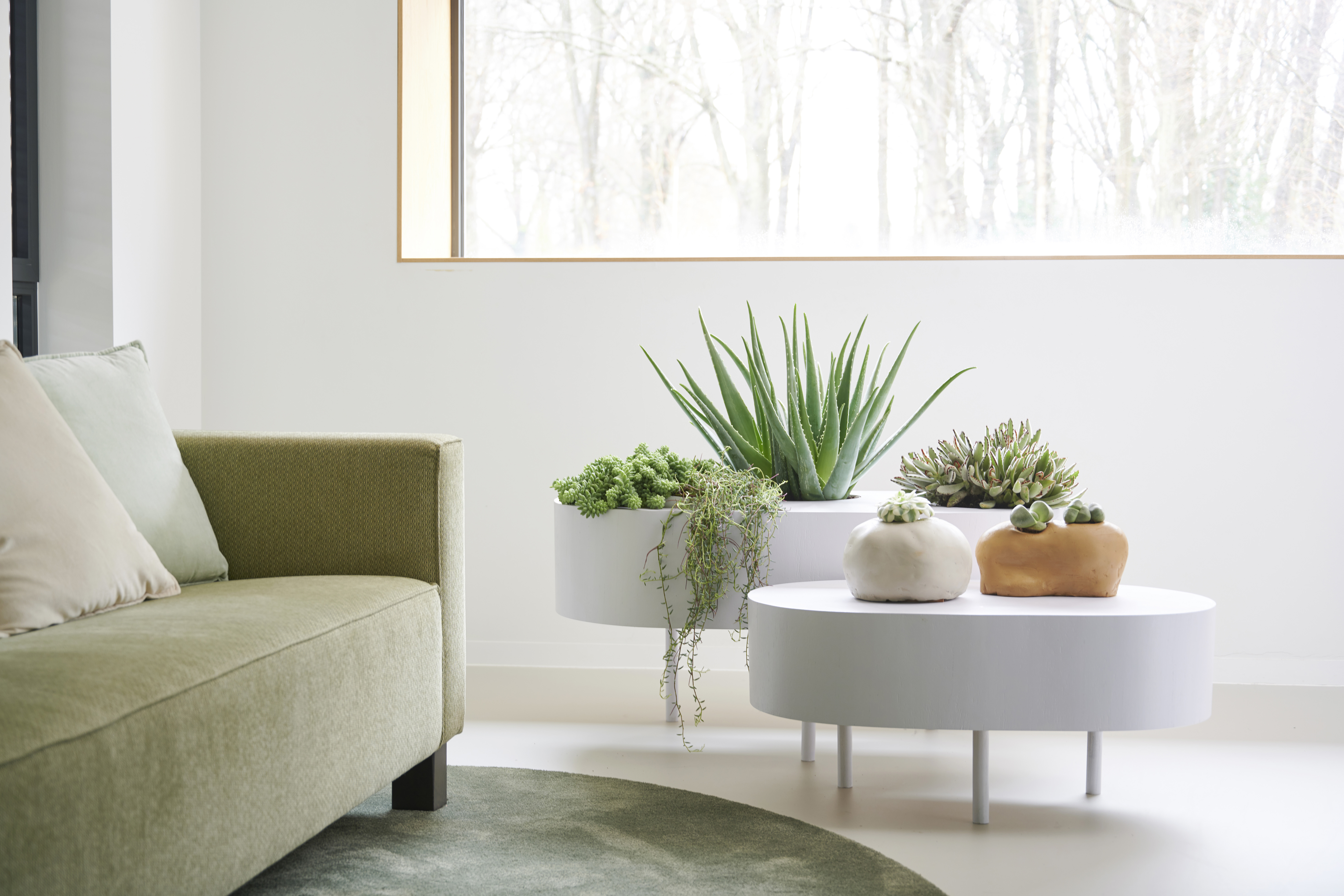
Whether you're a seasoned gardener or completely new to the planting game, chances are that you've heard of the darling little hardy plants called succulents. They've been an absolute game-changer to indoor gardens since they require much less attention than most plants. Not to mention that plenty of them tend to be small in size, making them perfect for limited square footage.
But these plants can live outdoors and in, so which are the best indoor succulents? If you've been on the hunt for low-maintenance plants for indoor gardening, you needn't look any further than this expert-approved rundown.
We reached out to gardening experts specifically for their suggestions and they came through with this wonderful list of suggestions. This succulent guide highlights the best varieties for you to bring into your home with basic care tips to ensure you don't fail your new addition.
1. Aloe Vera
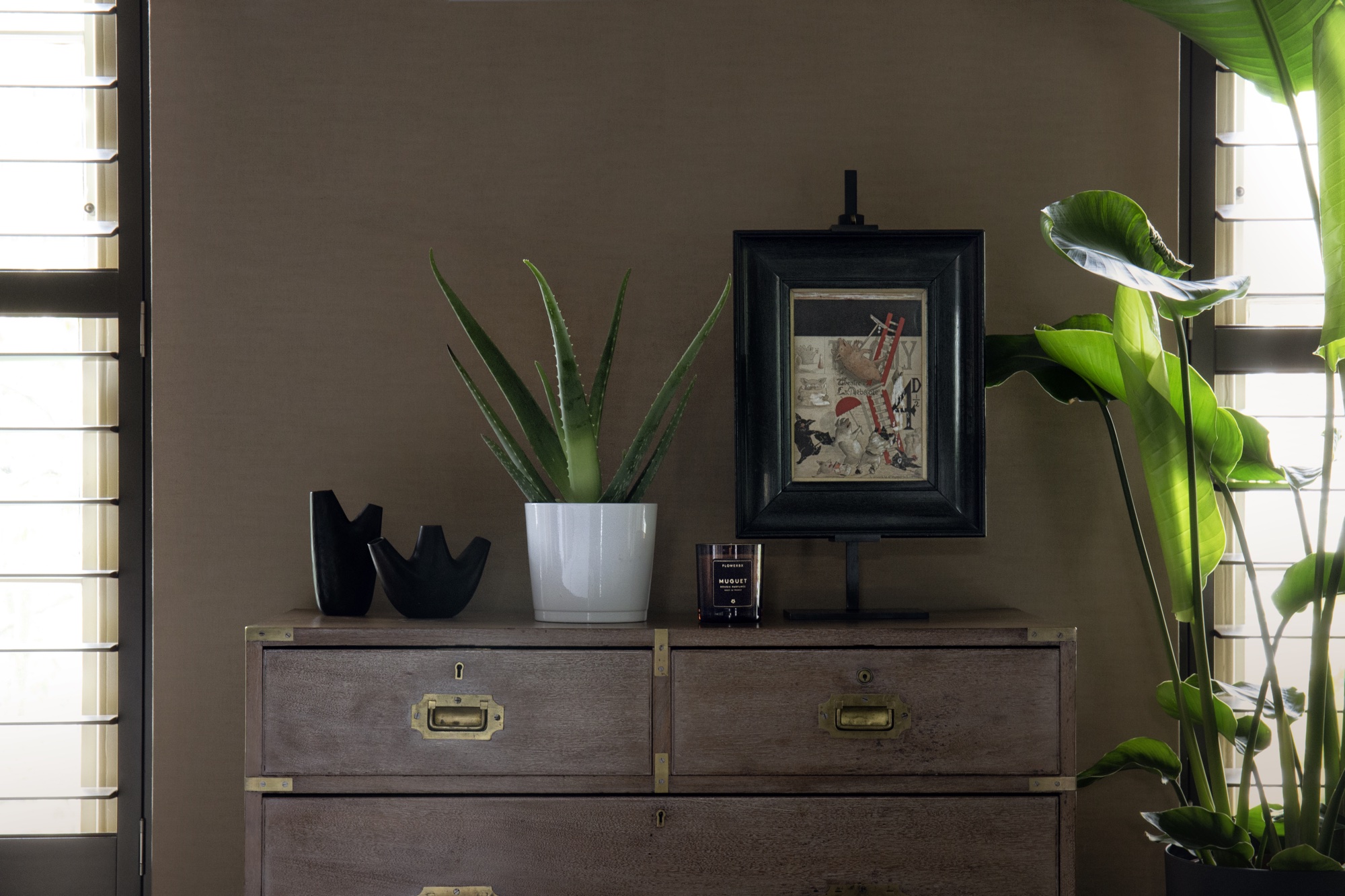
In conversation with Tony O'Neill, he tells us that aloe vera is at the very top of his list of succulent houseplant additions. "It's not only a beautiful succulent with its thick, fleshy leaves but also has the added benefit of medicinal properties," he says. "It can be a practical addition to any home."
If you're wondering how to care for aloe plants, Tony's advice is to just place them in a sunny spot and water sparingly, allowing the soil to dry out completely between waterings.
Having had an aloe vera houseplant myself, I can tell you with absolute certainty that this plant is the furthest thing from a pick me. It is quite self-sufficient and thrives in sill gardens, by kitchen windows, and around sunlit corners. Now, whenever you plan your next at-home spa day, you'll have aloe at the ready.
Price: $55
Container: 4" Reactive Glaze
If you're interested in adding an aloe vera succulent to your houseplant collection, this buy from Jackson & Perkins is perfect for you.
2. Jade Plant
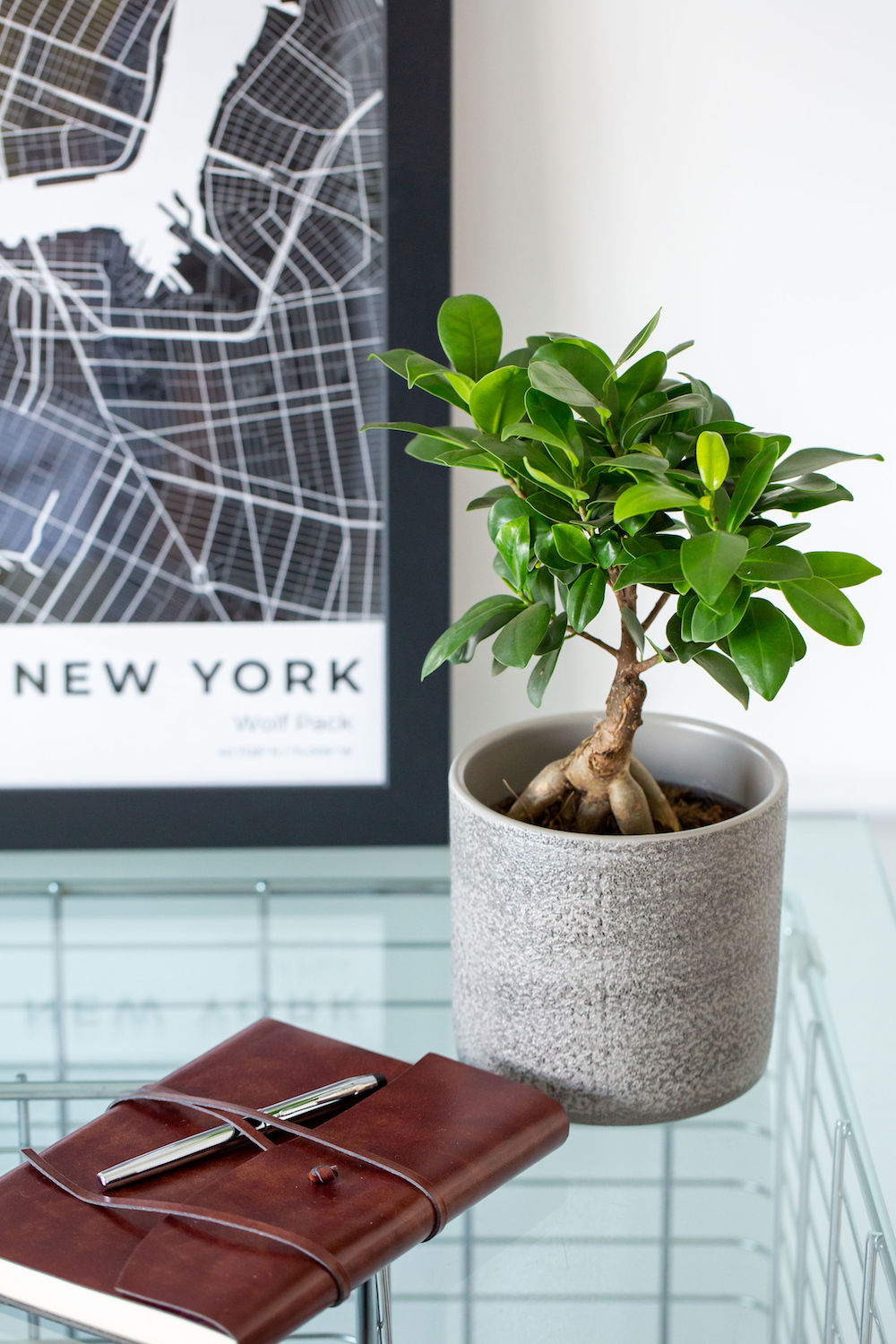
"One of the best-known members of the crassulaceae family is crassula ovata, commonly referred to as the jade plant or money plant," says Anastasia Borisevich, plant expert at Plantum. "And one of its most appealing features is its ability to store water in its leaves, allowing it to withstand periods of drought."
She explains that the plant's drought-hardiness combined with its tolerance for neglect, makes it an excellent choice for those who may not have a green thumb. "However, it’s important not to overwater the jade plant," she warns. "As it’s extremely susceptible to root rot."
In terms of jade plant care, Anastasia tells us that this succulent thrives in bright, indirect light, although it can tolerate some shade. She also finds that it prefers well-draining soil and enjoys regular fertilizing, at least once a month during the growing season to promote healthy growth.
Price: $20
Plant Size: 5"
Not only does Dr. Lu’s Organic Trailing Jade Plant harbor air purification qualities but it's also an intriguing succulent with its shiny, flowy stems.
3. Echeveria
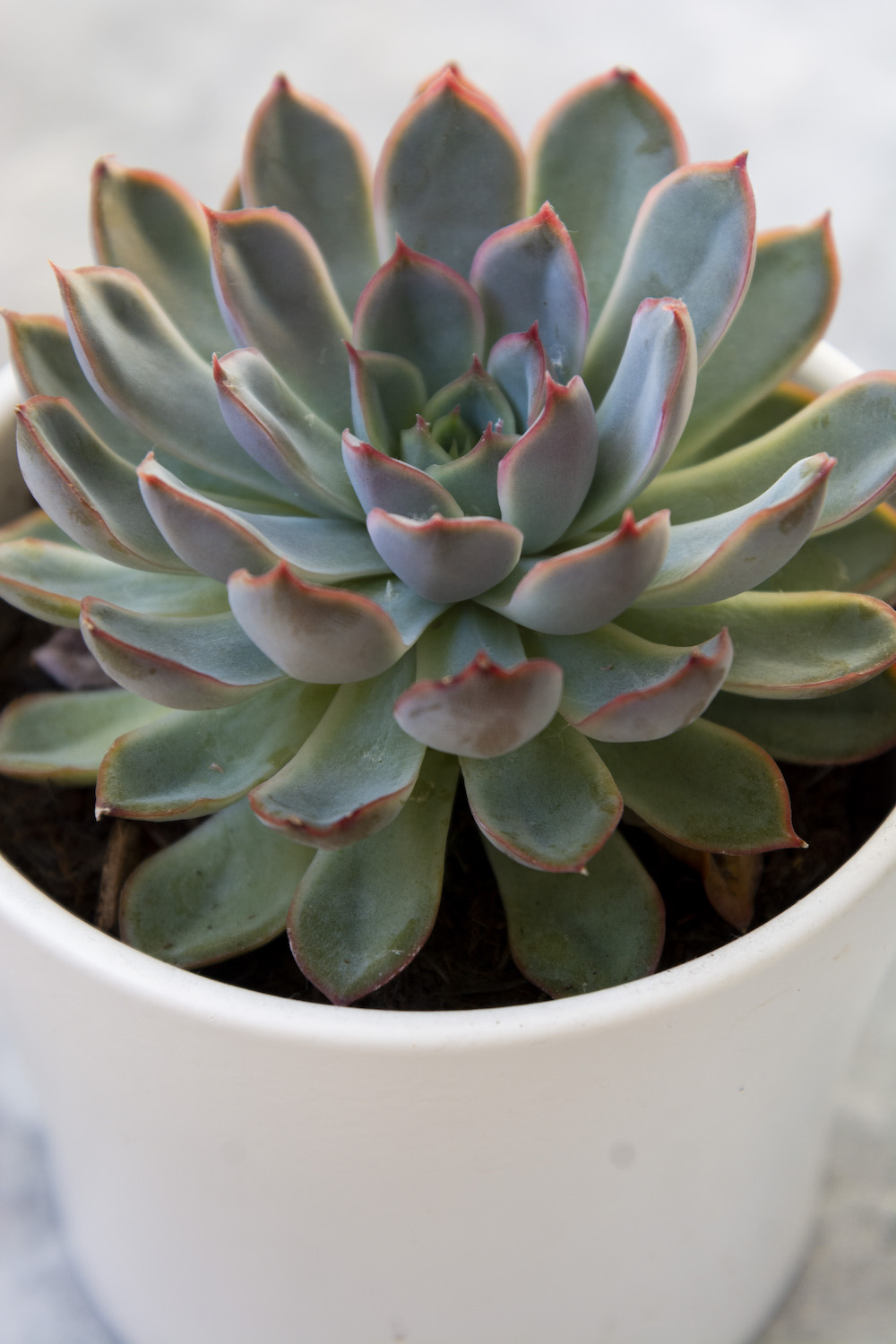
If you're looking for small indoor plants that won't overwhelm tiny spaces, then we find that echeveria plants are definitely one to consider, and Tony agrees.
"Echeverias come in a variety of colors and forms, creating a stunning display when grouped together," he notes. "They thrive in well-draining soil, appreciate frequent watering, and need bright light to maintain their vibrant colors."
Anastasia also finds echeveria to be an unfailing indoor succulent for beginner and pro gardeners alike. "It basks in popularity, which isn’t surprising, thanks to its fleshy bluish-green leaves with purple tips, resembling a stone rose," she describes. Her pro-tip to housing these succulents is to plant them with cacti for a pretty indoor feature.
Price: $13
Quantity: Pack of three
Since these succulents are rather small in size, this set of Echeveria Live Plants from Walmart is a great deal if you want a cluster of mini plants to dot your side table.
4. Snake Plant
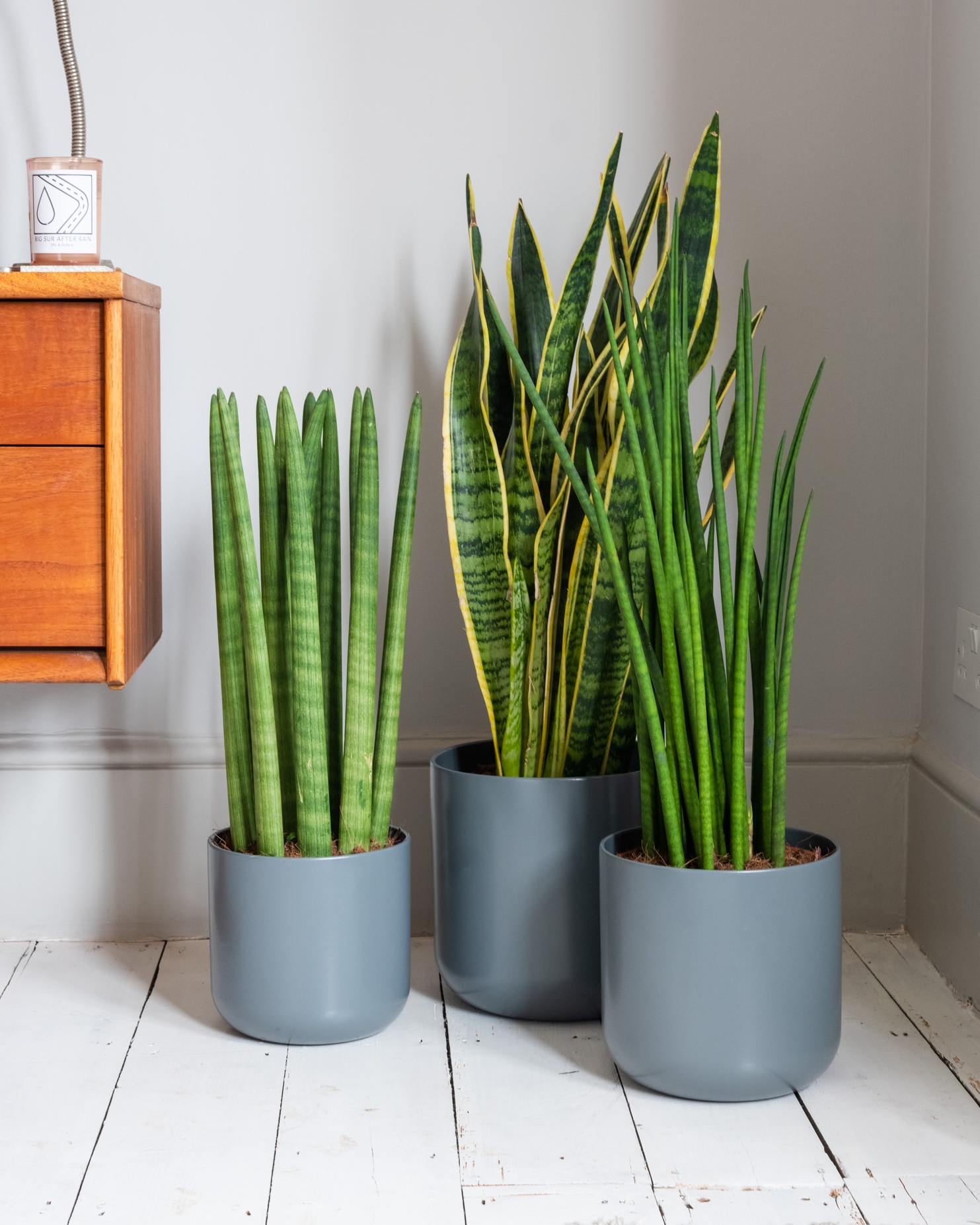
Also known as mother-in-law’s tongue, Tony tells us that the snake plant is incredibly hardy and requires minimal care. It's no surprise it's one of the most popular houseplants, given the fact that it can be left to its own devices and flourish nonetheless.
When it comes to snake plant care, he reassures that there's not much to worry over. "It tolerates low light but thrives in bright, indirect light," he says. "And it's important to water infrequently, every few weeks or so, as it’s very drought-resistant."
Anastasia also points out that it's a favorite among beginners because it thrives on neglect. "This makes it perfect for a bedroom, bathroom, or any area of your home that needs a touch of greenery," she says.
Price: $60
Plant Size: 10" - 12"
If you're looking for fresh gifting ideas for fellow green-thumbed friends, you can't go wrong with Jackson & Perkins Golden Dreams Snake Plant.
5. Burro's Tail

Burro's tail, literally translating to donkey's tail from Spanish to English, is a common succulent houseplant adopted by gardeners for a bit of hanging plant decor. "The trailing habit of burro’s tail makes it an excellent choice for hanging pots," he says. "It flawlessly adds a soft, cascading effect to the smallest of indoor spaces."
If there are two things you need to know about the burro's tail plant, it's that it loves bright light and needs infrequent watering. Tony recommends quenching the succulent's thirst every two to three weeks for successful growth.
Not only is burro's tail a gorgeous indoor succulent but it's also one of the best trailing houseplants. We encourage pairing it with a chic floating container like this La Jolie Muse Storm Gray Honeycomb Hanging Planter from Amazon.
Price: $10
Size: 4"
Tend to this Live Burro's Tail Succulent from Amazon with proper care and once the stems grow out, swap it to a hanging planter to show off its gorgeous vines.
6. Zebra Plant
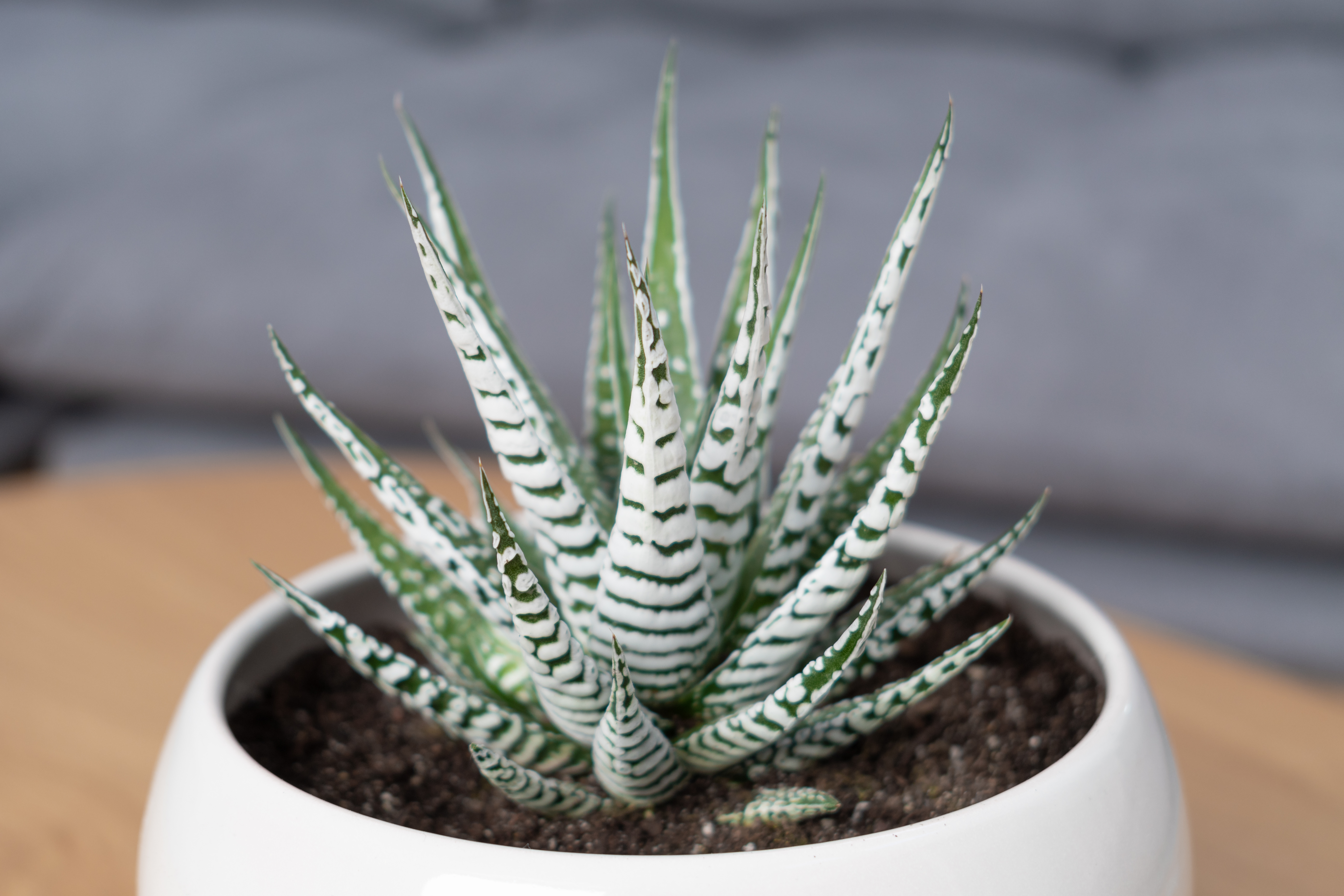
"Native to the Eastern Cape province of South Africa, the zebra haworthia (haworthiopsis attenuata) has found its niche both in the shade of desert rocks and in houseplant lovers’ hearts," says Anastasia.
She tells us that the combination of its undemanding nature and tendency to produce offsets makes this succulent a perfect starter plant. As long as it gets plenty of diffused light, a well-draining substrate, and a period of dormancy in winter, she finds that it’ll be a happy camper for many years to come.
"In fact, you might even see it bloom in the summertime if conditions are good enough," she notes. "In this case, the zebra haworthia will put out a long flowering stem adorned with slender, whitish florets."
Price: $9
Size: 2.5" Pot
This Indoor Super Zebra Plant from Walmart features striking, stripey succulent leaves and is a fun finishing touch to small wall nooks and sparse bookshelves.
7. String of Pearls
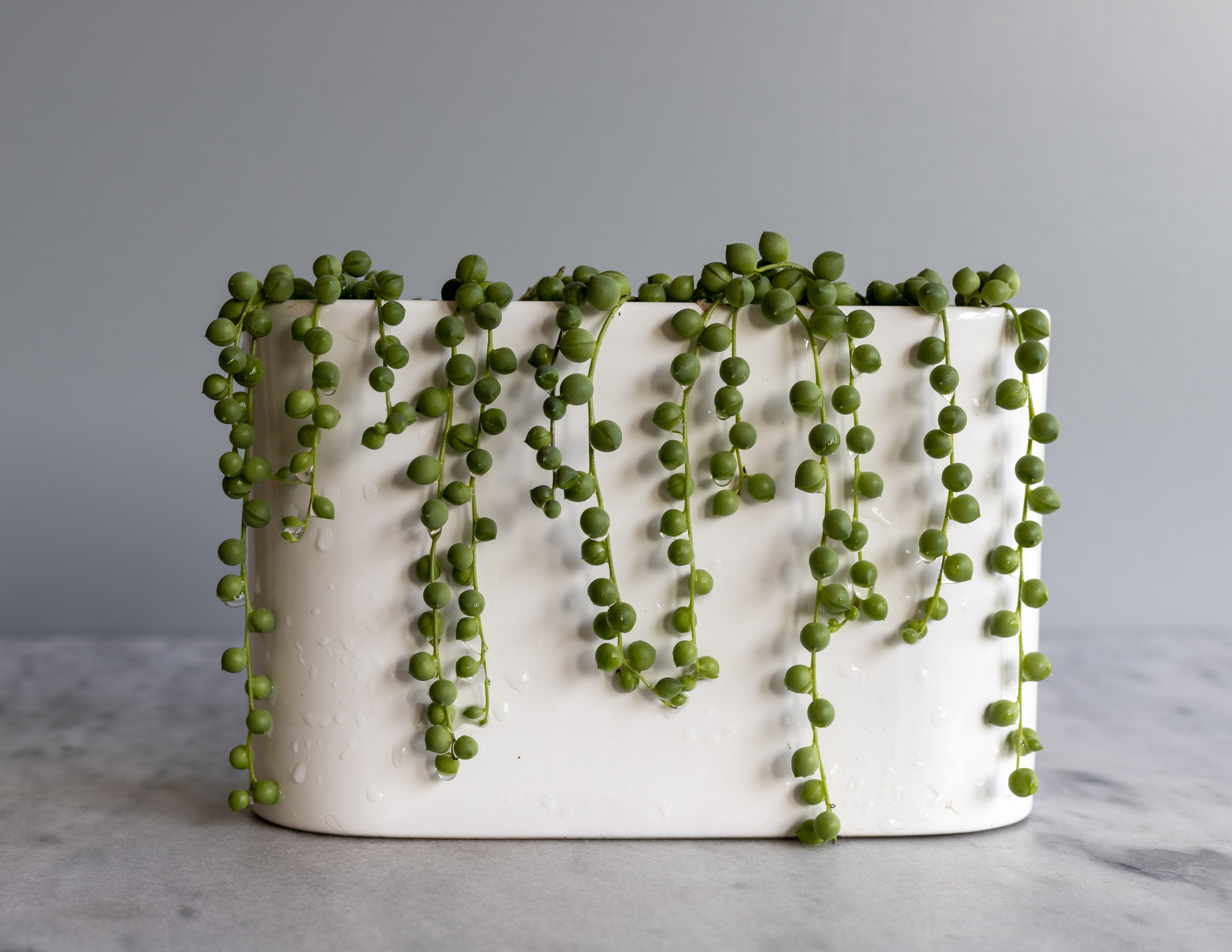
According to Tony, string of pearls is one of the best indoor hanging plants, beloved by both, interior designers and gardening experts. You may not be able to tell that they're succulents at first glance, but they are in fact a member of the plant family.
"With its cascading strands of round, bead-like leaves, the string of pearls is a statement plant for shelves or hanging baskets," he adds. "It does best in bright, indirect light and should be watered lightly, allowing the soil to dry out fully between waterings."
Before you get to bringing this plant home though, we should warn against growing them in shallow floor planters. Since they naturally tend to grow their trailing vines and root onto contact surfaces, it's a good idea to keep them hanging instead.
Price: $70
Container: 6" White Ceramic
This String of Pearls Succulent Plant is another indoor grow that is perfect for floating planters that hang in living room corners.
8. Panda Plant
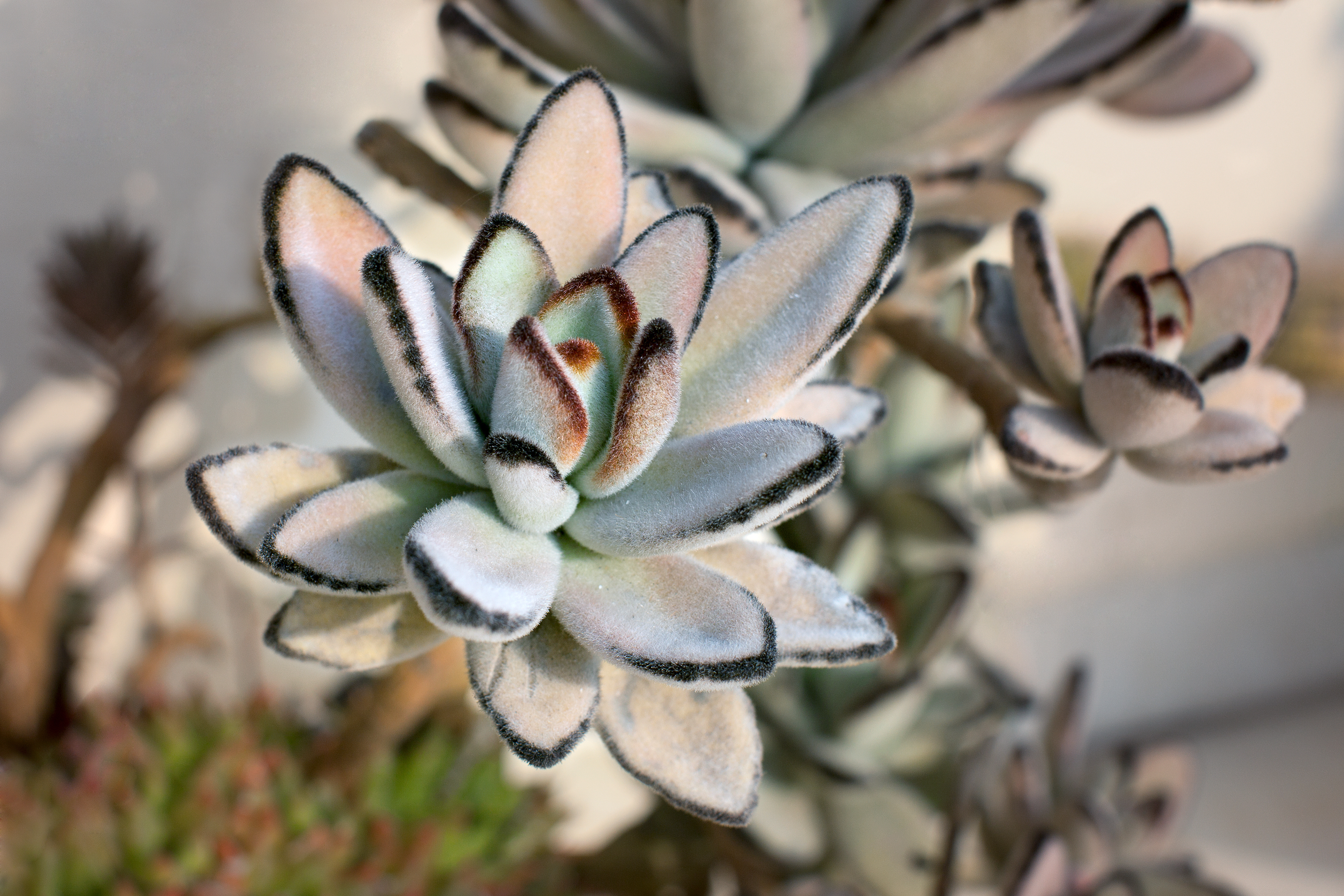
Last but not least, we have the panda plant, also known as kalanchoe tomentosa. This visually interesting indoor succulent is yet another animal-named indoor plant that's perfect for budding succulent gardeners.
"Known for its fuzzy leaves with brownish edges, the panda plant adds both texture and a touch of whimsy to any room," says Tony. "It prefers bright, indirect light and requires minimal watering, so let the soil dry completely between waterings."
If you visit your local nursery and are unable to locate a panda plant, you might also want to keep an eye out for crops titled 'chocolate soldier'. Its sweet brown and army green colored leaves warrant this fun nickname.
Price: $9
Size: 4" Pot
If you want all to beauty of this crop without none of the work then this Panda Plant Succulent from Walmart should be your next buy.
Succulents are adorable green grows that are guaranteed to perk up any indoor living space. If you ask us, they pretty much make their own case for being adopted into houseplant gardens. Low-maintenance and good-looking, these succulents are a winning choice.
And if you've been a succulent fan but haven't been sure of which varieties to bring inside, you now have this expert list to guide your next green shopping spree. Pop one on a bookshelf, place one by your window sill, or plant one on your home desk for a spritely green finishing touch.
FAQs
How Much Care Do Indoor Succulents Need?
If you're swaying towards adopting a couple of these indoor succulents, then we recommend following Tony's guide to properly care for these houseplants like a pro.
Light: "Most succulents thrive in bright, indirect sunlight," he says. "So ensure they get at least four to six hours of light daily."
Potting: Tony recommends using a well-draining soil mix, and planting in containers with drainage holes to prevent water from sitting in the bottom.
Watering: "Allow the soil to dry completely between watering," he advises. "Succulents are drought-tolerant and can suffer from root rot if overwatered."







